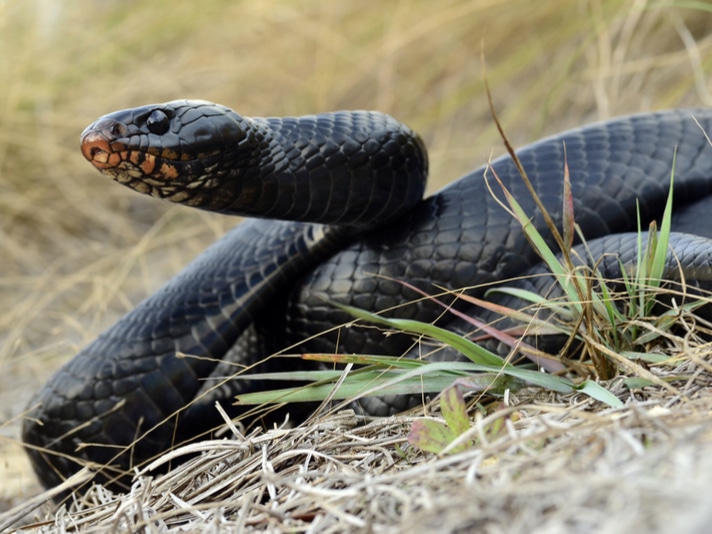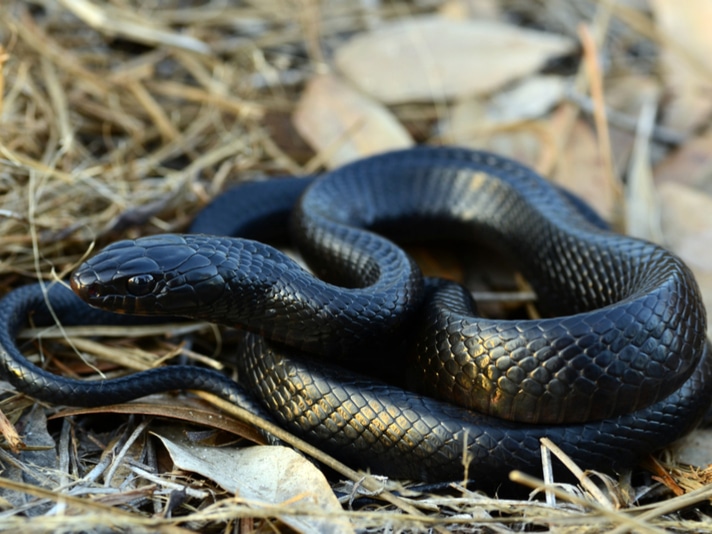They determined that the Eastern indigo snake sheds detectable DNA in the soil in which they traverse in less than two minutes, and that DNA is detectable for up to 10 days.
The Eastern indigo snake (Drymarchon couperi), the longest native snake in the United States, is not easy to locate in the wild. Scientists have devised a way to find them by testing environmental DNA or eDNA in soil samples.
With funding from the Department of Defense’s Legacy Resource Management Program, researchers with the Orianne Society have shown that eDNA, which detects genetic material that indigo snakes shed into their environments, can determine if the Eastern indigo snakes are in the environment without having to directly observe them in the wild.
“This is an exciting development for eastern indigo snake conservation,” Dr. Houston Chandler of The Orianne Society said in a press release put out by the U.S. Forest Service/U.S. Department of Agriculture. “It adds another tool to the toolbox that can now be used to make better conservation decisions for this charismatic species.”

Patrick K. Campbell/Shutterstock
The researcher were led by Rocky Mountain Research Station’s Leah Samuels, ORISE fellow, and Dr. Taylor Wilcox, research geneticist. The duo were assisted by Dr. Houston Chandler and Benjamin Stegenga of The Orianne Society, Michelle Hoffman and Dr. James Bogan of the Central Florida Zoo, Dr. Michele Elmore and Dr. Robert Aldredge of the U.S. Fish and Wildlife Service, Stephanie Hertz of Texas A&M University, Dr. Mark Davis of the University of Illinois Urbana-Champaign, and John Kronenberger and Dr. Michael Schwartz of the Rocky Mountain Research Station.
They determined that the Eastern indigo snake sheds detectable DNA in the soil in which they traverse in less than two minutes, and that DNA is detectable for up to 10 days.
Eastern Diamondback Rattlesnake Survives Getting Swallowed By Eastern Indigo Snake
41 Eastern Indigo Snakes Released Into Florida’s Apalachicola Bluffs and Ravines Preserve
“This method increases the time window available for biologists to detect snakes in their natural habitats,” lead author Leah Samuels of the USDA Forest Service Rocky Mountain Research Station said in the press release.
“One of the challenges of Eastern indigo snake monitoring is that the animals are highly mobile. When used in conjunction with active searches, soil samples could let you know not just if snakes are using the habitat right now, but if they have in recent history.”
The scientists were unsure if eDNA based monitoring would work in the environment in which Eastern indigo snakes are known to inhabit, which the researchers describe as dry sandhills during the winter months. They then studied captive Eastern indigo snakes in four sandy enclosures in an effort to mimic real world conditions.
The scientists studied the captive snakes in four different time periods and collected soil samples after each time period was up. The scientists determined that soil sampling for eDNA of the species is a good option and can work with other monitoring methods.
“Environmental DNA sampling was really pioneered in aquatic systems, but this study is an example of the power of these tools in terrestrial systems as well,” co-author Taylor Wilcox of the Rocky Mountain Research Station said in the statement. “This approach will be attractive to land management agencies working to conserve the species. We appreciate the Department of Defense’s support for this research as part of its ongoing commitment to preserving species and habitats under their stewardship.”
Eastern Indigo Snake Information
The Eastern indigo snake is the longest native snake in the United States. It is known to sometimes reach more than 8 feet in length. The snake is a federally threatened species and certain restrictions are in place with regard to possessing them. A member of the Colubridae family, indigo snakes feed on a variety of animals. These include small mammals, amphibians, birds, lizards, baby turtles, and other snakes, including every species of venomous snake found in Florida.
The snake was historically found in southern Georgia, Alabama, eastern Mississippi and throughout much of Florida, but was largely extirpated from the Apalachicola Bluffs and Ravines Preserve due to habitat loss and fragmentation. The last sighting of an Eastern indigo in the ABRP occurred in 1982. The Apalachicola Bluffs and Ravines Preserve is the only area designated by the state for the introduction of the indigo snake. In 2022, a wild-hatched Eastern indigo snake was found in Alabama’s Conecuh National Forest. This marks the second time in 60 years that a wild specimen was observed in the wild.
The complete paper, Persistence of Reptile DNA in a Terrestrial Substrate: A Case Study Using the Eastern Indigo Snake” can be read on the Environmental DNA website.



